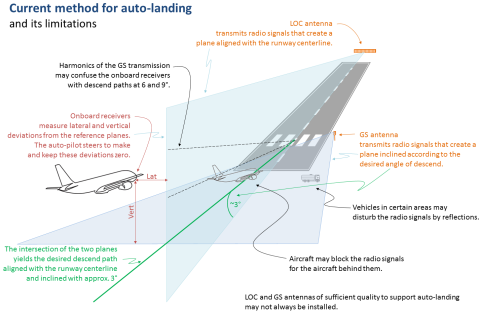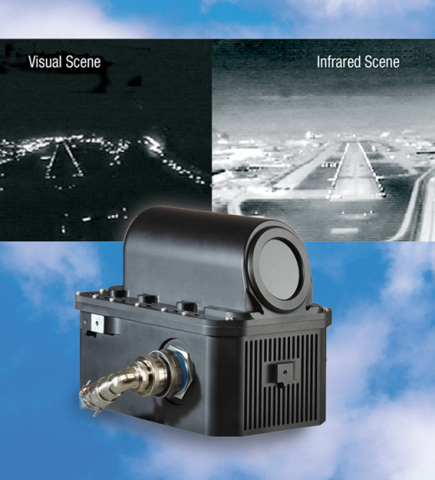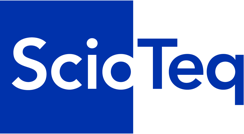IMBALS

IMBALS
The IMBALS project (IMage BAsed Landing Solutions) aims to develop, validate and verify a certifiable Image Processing Platform (IPP) and demonstrate it in a Vision Landing System (VLS) that is capable of autolanding the Large Passenger Aircraft (LPA) based on images supplied by a camera system and without support of ground based precision instrument landing aids. The VLS will additionally enhance the situational awareness for the crew during any autolanding by supporting a Combined Vision System (CVS) based HMI in the Disruptive Cockpit.
Increased safety through automation of approach and landing
The approach and landing phases are the most critical flight phases in commercial aircraft operations. Roughly 50% of commercial aircraft accidents occur in approach or landing. Next to that, many aircraft accidents have a significant contribution from human error. Hence, we believe that flight safety will increase if we automate the entire approach and landing procedure. And increased flight safety comes at the benefit of the entire society.

Although proven systems already support fully automated landing of commercial aircraft today, only 1% of the landings today are entirely automated. ScioTeq and its partners have the ambition to turn this figure around: let 99% of the approach and landings be performed without the need of manual flying and the accident rate during approach and landing should decrease.
The current methods for automated landing depend on radio signals provided by expensive ground infrastructure on the airport or by satellites in space. These radio signals are not always available with the quality that is required for safe auto-landing. Independence from these radio signals would drastically increase the number of entirely automated landings.
The ultimate goal of the IMBALS project is to demonstrate a system that guides an aircraft through the approach and landing phases based on images that are captured with an on-board camera system, making auto-landing independent from radio signals.
More advantages beyond flight safety
Image based landing solutions may benefit from sensors with better performance than the human eye (e.g. Infra-Red sensor better see at night and through fog). This would reduce the likelihood that a flight needs to divert due to low visibility conditions at a destination airport without the adequate ground infrastructure. Infra-Red (IR) sensors are already used for so called Enhanced Flight Vision Systems (EFVS). With EFVS, the pilot has to fly the aircraft based on the camera images being presented on a display. The IMBALS project will go one step further: the computer will interpret the images and steer aircraft, reducing the training requirements for the pilot.

The fast growing demand for pilots will create a pilot shortage in the future. This drives the industry to reduce the required flight crew from 2 pilots to 1 pilot per cockpit. One challenge for this relates to lowering the cockpit workload. Note that the approach and landing phases today still incur the highest workloads of the whole flight. Another challenge relates to the risks associated with incapacitation of the sole pilot on board. In this case, the aircraft must be able to land autonomously. Both challenges are being addressed by the IMBALS project.
As explained above, advanced sensors will help to reduce the likelihood for a diversion. Additionally, the current way of auto-landing based on radio signals requires increased separation between aircraft. This negatively impacts the airport throughput, causing arriving aircraft to circle in holding patterns while waiting for their turn to land or causing diversion to other airports. Both waiting and diverting aircraft consume more fuel, resulting in economic losses and higher emissions. Since image based landing will help to reduce the likelihood for holding and diversion, it will help to reduce the environmental footprint of commercial aviation.

IMBALS within Clean Sky 2
The IMBALS project is part of the Large Passenger Aircraft (LPA) platform within Clean Sky 2, Europe’s largest research and innovation programme for aeronautics. Within LPA, research is conducted on technologies that are needed for break-through innovations for future commercial aircraft. An important work package focuses on the cockpit of future aircraft, called Disruptive Cockpit or DISCO. ScioTeq is proud to contribute with two projects to the DISCO: LAPARTS and IMBALS.
The IMBALS project mainly focuses on the definition of the avionics computer that extracts the position information from camera images. This computer is called the Image Processing Platform (IPP) and will process images from a visual wavelength camera and an IR camera. The IPP prototypes will be initially tested in lab environment. At a later stage, it will be integrated with other aircraft systems of the DISCO concept to realize together the image based landing function. Near the end of the project, the IPP will also be tested in flight by Airbus. The IMBALS project started in March 2018 and will last till August 2022.
Challenges
Landing a 150 ton aircraft at 250 km/h with 300 passengers on board on a 50 meter wide strip is not a trivial task. The performance of the system must be assured in terms of accuracy, integrity, availability and continuity. Particularly the integrity is an enormous challenge. In other words: how sure are we about the correct operation of the system at any moment. Demonstrating in a measureable way the integrity of image processing algorithms for such critical application has never been done before and is one of the focus areas of the research within IMBALS.
Another big challenge relates to the large variety in lighting and visibility conditions that may be encountered together with variations in the runway conditions, textures and markings, despite the standardization that applies. It is acknowledged that IMBALS will demonstrate its technology in a variety of conditions but without the ambition to cover all possible conditions. However, the IPP will have provisions to expand its usability envelope.
Innovation is the only answer
IMBALS is exactly a great example on how innovation brings new opportunities for ScioTeq, its customers and the society. Landing aircraft based on images is another approach than the usual methods based on radio signals. Interpreting rather than generating images is for ScioTeq a step outside its comfort zone. However, ScioTeq leverages the commonality in technology needed for generating images and interpreting images.

Teamwork
Airbus Operations in Toulouse (France) acts as topic manager for the IMBALS project and teams up with the IMBALS consortium led by ScioTeq. This consortium includes the University of Leuven (Belgium), (UN)MANNED (Belgium) and Tekever ASDS (Portugal). ScioTeq involves its specialists located in Kortrijk (Belgium) and Toulouse (France).
This project receives funding from the Clean Sky 2 Joint Undertaking under the European Union’s Horizon 2020 research and innovation programme under grant agreement No 785459.
More information
Can't find what you are looking for?
For more information or alternative solutions, please click 'contact us' below.
